The ending of Paolo Sorrentino's film The Great Beauty is one long, slow take over the River Tiber. The aerial camera rolls, at bird's eye height, from one bank to the other, flying over couples out for a summer stroll, or sometimes at one with the channel of water, crossing through the dark eyes underneath bridges or resting on streetlamps lit for a Roman sunrise. The very last scene in this serene finale takes us up close to the Sant’Angelo Bridge. Before the screen fades to black, Sorrentino abandons us on one of the angels that Bernini ideated to decorate this bridge connecting the Vatican with the Tiber. And from there, we call to mind what this city of popes, this epicentre of the 17th century world means for us as we marvel at the works of a unique man with the Eternal City always on his mind.
|
Author: Marina Valcárcel
Art Historian
|
 |
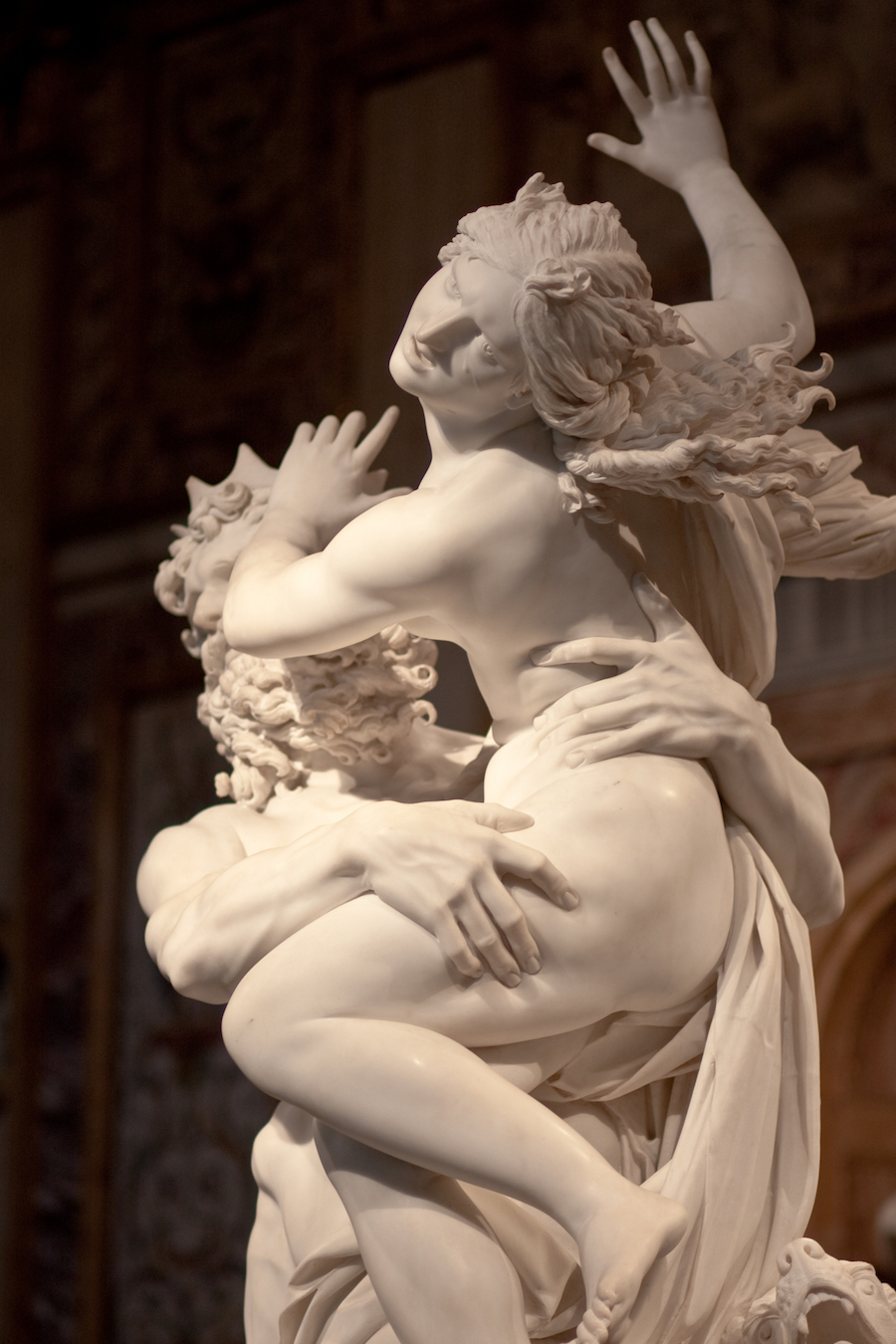
The Rape Of Proserpina (detail), 1621-22, Borghese Gallery, Rome
The ending of Paolo Sorrentino's film The Great Beauty is one long, slow take over the River Tiber. The aerial camera rolls, at bird's eye height, from one bank to the other, flying over couples out for a summer stroll, or sometimes at one with the channel of water, crossing through the dark eyes underneath bridges or resting on streetlamps lit for a Roman sunrise. The very last scene in this serene finale takes us up close to the Sant’Angelo Bridge. Before the screen fades to black, Sorrentino abandons us on one of the angels that Bernini ideated to decorate this bridge connecting the Vatican with the Tiber. And from there, we call to mind what this city of popes, this epicentre of the 17th century world means for us as we marvel at the works of a unique man with the Eternal City always on his mind.
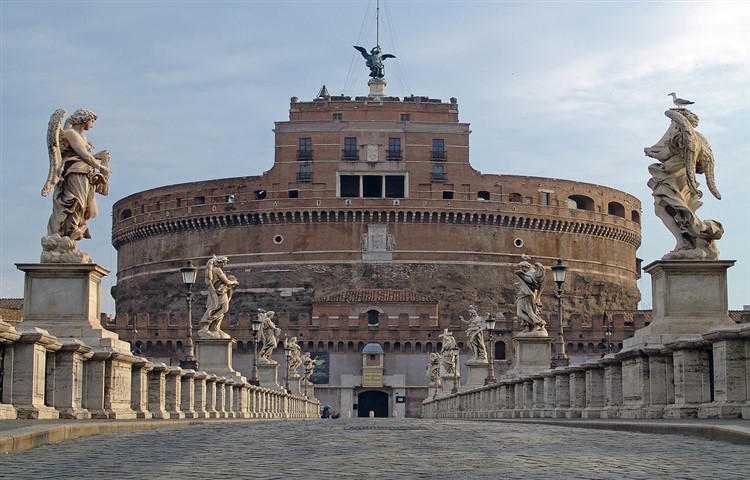
Sant’Angelo Bridge, Rome
Rome is currently celebrating the 20th anniversary of the re-opening of the Borghese Gallery with an exhibition dedicated to Gian Lorenzo Bernini (1598-1680), the last of the great, universal masters who made Italy the artistic heart of Europe for over 300 years. Not only was he the greatest sculptor of the 17th century, he was also an arquitect, painter, dramatic author, and, above all, the director general of papal Rome, a Rome that would be required to endure until the present day and to remain the most grandiose show of urbanism ever attempted. Bernini served under eight popes in this most Baroque of cities, a style that grew out of the triumphal catholicism of the Counter-Reformation. By 1600, Italy had already gone through many uneventful centuries when suddenly, in the space of a hundred years, it becomes more active than ever before. But why and how does Italy embody such artistic genius in its most absolute form time and time again? What is the mystery surrounding this small Mediterranean peninsula located between Spain and Turkey? What is its secret recipe for churning out artists of calibre from Giotto to Modigliani? What is the link between politics, the Reformation and the Counter-Reformation?
Let's take a closer look at the ten angels sculpted by Bernini between 1668 and 1669 when his entire oeuvre was dedicated exclusively to works that were full of emotion. The windswept Sant'Angelo Bridge angels are disconsolate between the clouds above and the solid, cylindrical Sant'Angelo Castle, with a black angel at its pinnacle, as a backdrop. In his latter years, Bernini, more than ever before, used the movement of robes such as theirs as a language with which to convey feeling.
The Sant’Angelo Bridge was built to connect the two banks of the River Tiber in the 1st century AD. In the Middle Ages, it gave access to the Vatican City. Since the 17th century, Bernini's sculptures have left the pilgrims crossing it open-mouthed with wonder. It is a matchless means of approach into the oval arms and colonnades of St Peter's Square, the bronze Baldechin ceiling, the spiritually-awakening Roman centurian Saint Longinus who had speared the crucified Jesus, the Throne of St Peter symbolic of the new Ecclesia Triumphans (Church Triumphant) and so on.
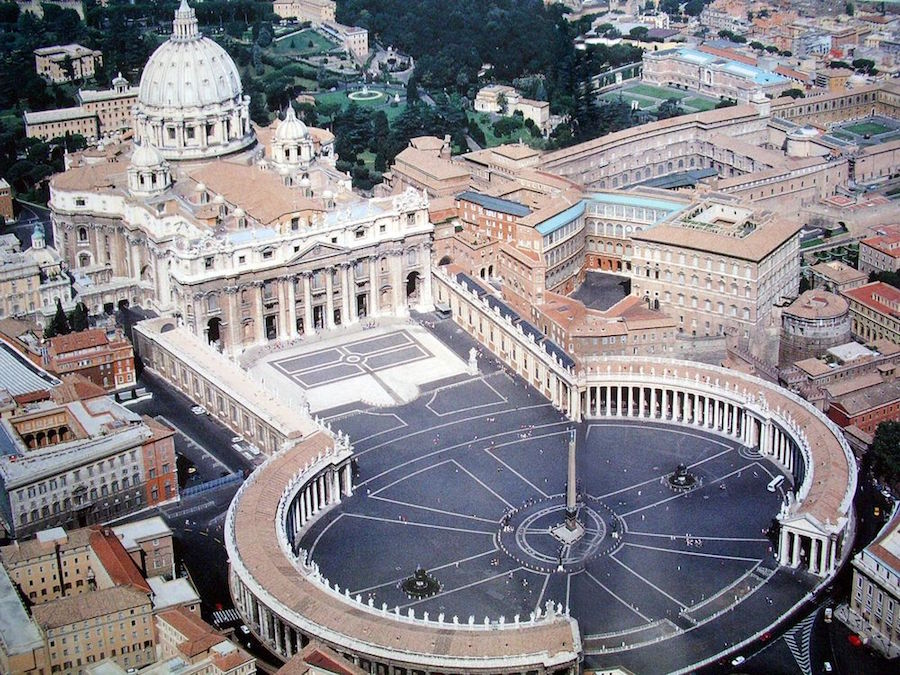
St Peter's Basilica and Square, Vatican City, Rome
In the 17th century, the power of Rome and its popes was unbounded. The Catholic Church, despite having lost some of its territories, gained a renewed sense of triumph after saving itself and its dogma from herecy. The new popes converted their desire for power into a spiritual empire, believing themselves the heirs of Roman emperors. St Peter's was their work and Bernini their right-hand master artist for 57 uninterrupted years. When our young sculptor, not yet 30 years of age, received and accepted Pope Urban VIII's commission to complete St Peter's, it was a challenge and a feat that, one could say, surpassed that of replacing the Twin Towers in New York after 9/11.
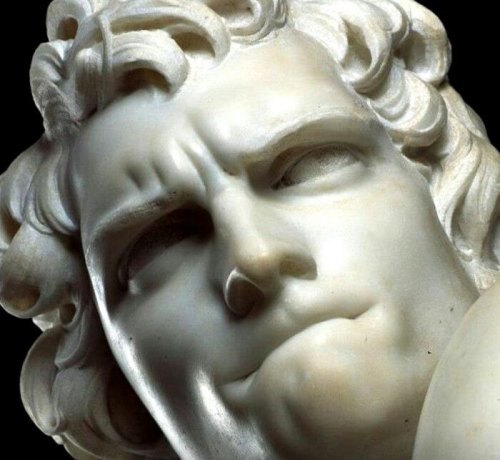
David (detail), 1623-24, Borghese Gallery, Rome
Bernini at the Borghese Gallery
Adding to Cardinal Scipione Borghese's already unrivalled collection, his eponymous gallery, set amongst gardens, lemon trees and fountains between Popolo Square and Mount Pinzio, is currently exhibiting almost all the paintings ever attributed to Bernini. Also on display and facing each other are his two bronze Crucifixions which are both normally housed outside Italy, one in Madrid's Escorial Palace and the other in Toronto. But, more especially, there are his greatest busts ~ the first and second versions of Scipione Borghese and that of Constanza Bonarelli.
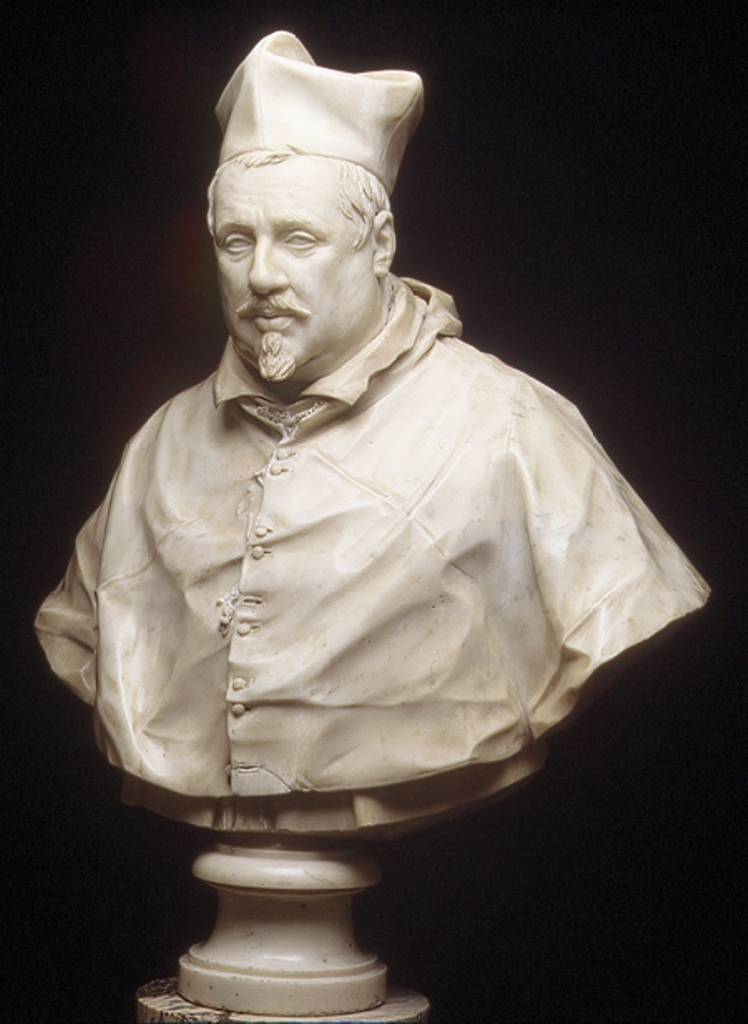
Bust of Cardinal Scipione Borghese, 1632, Borghese Gallery, Rome
Bernini brought about a total transformation in the sculpted portrait, taking it out of Renaissance immortality and breathing new life back into it. He was a prodigious craftsman who learnt the trade from his sculptor father. He never attended school, never studied Latin and, since childhood, had escaped from his chores and work in Santa Maria Maggiore to what was his one true place of learning ~ the Vatican Museums. There, he would study works such as the Belvedere Torso or the Apollo and draw out his first sketches. However, in addition to his talent as a draughtsman and his technical mastery, Bernini's head also harboured the "concetto", the idea or the concept. It did not matter whether it was for an opera set or a village square. One of the "concetti" that obsessed him was to challenge his materials and make them exceed their limitations. To work at the whiteness of the marble until it appeared coloured. To invent unruly manes of hair speckled with shadows or deep beards like foam on the ocean waves, trepanning and chiselling away at his pale materials, the hands of Gods sinking into the flesh of a nymph or tears running down a cheek ... in such a way that he aspired to imbue cold, inert stone with movement and life.
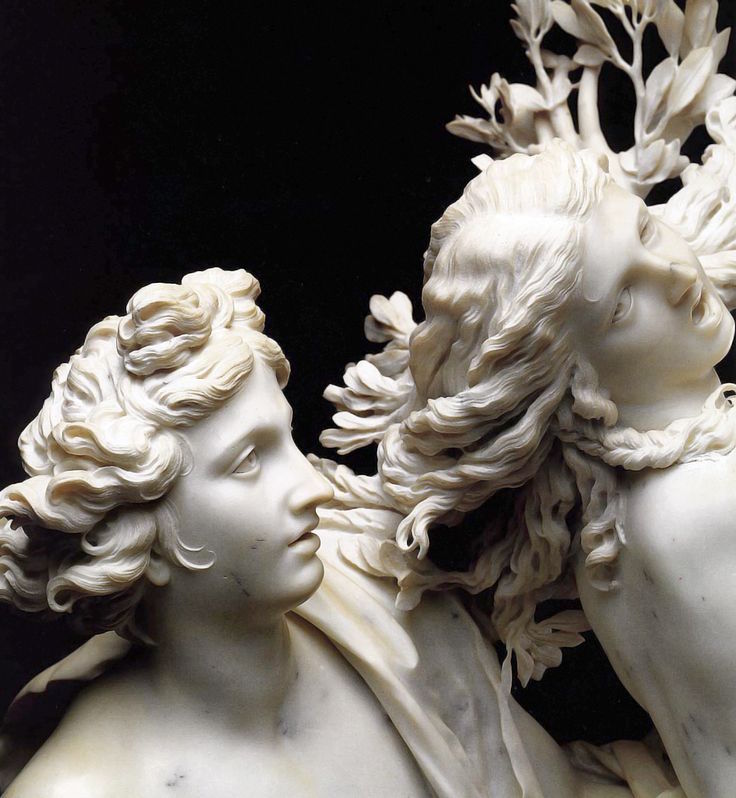
Apollo and Daphne (detail), 1622-25, Borghese Gallery, Rome
Letting the city yield its mysteries
In Alejo Carpentier's preface to Love For the City, he writes: “To roam a city is to retrace it, deconstruct it and look at it until it yields up its mysteries." This exhibition also offers us an exciting second dimension whereby we discover Bernini's signature stamp throughout the rest of Rome via the ecstasies of his sculpted saints in church chapels, in the bronze stolen from the facade of the Pantheon to construct the Baldequin ceiling, in the heraldic bees from the Barberini family's coat of arms that embellish gods of mythology and funeral monuments alike, in his fountains with naked Neptunes stepping out of shells or his elephants carrying obelisks ....
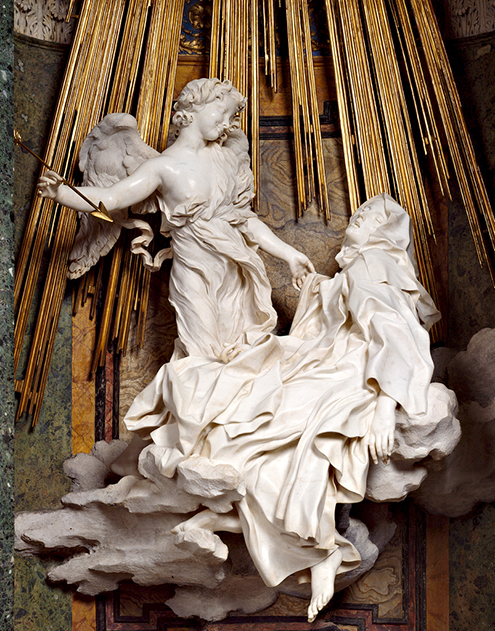
The Ecstasy of Saint Teresa, Cornaro Chapel, Santa María della Vittoria Church, Rome
And finally, in the Piazza Navona, still as it ever was today, is the palatial home where Cardinal Giambattista Pamphili was living in 1644 when he was elected Pope Innocent X. There was much commentary at the time about his wish not to move into the Vatican, a remote place on the opposite banks of the Tiber that horrified him with its identikit salons and sacred museums. He wanted to stay here in Rome proper, in this square that had welcomed carriages and horses and the whole Roman spectacle for 16 centuries. The Piazza Navona rose out of the Circus Agonalis, Domitian's stadium built in AD 85 and changed name from Agone, to Navone and eventually Navona. Innocent X decided to advance the prestige of his already powerful family by enlarging their palace and revamping the square. After many a trial, tribulation and false start, Bernini was chosen and began his modelling of the Fountain Of The Four Rivers. Often, when strolling through this piazza by night, one might imagine the Innocent X of Velazquez's portrait, with his critical, calculating eyes looking down from a high window, at the end of the long gallery frescoed by Pietro da Cortona and which, at night, even today, remains lit, as if forcing us to remember him. From here, the pope would supervise Bernini, watching as his work took shape ~ the palm tree bent double by the wind, the Statue of the Moor wrestling with a dolphin, the rock that a stubborn Bernini wanted removing from the ground in order to then somehow drill into it and, as if by magic, make it anchor an obelisk in place. There also, in this night of reminiscences, are Francis Bacon's 40 plus versions of Velazquez's portrait and the video in which Jeremy Iron's inimitable voice reads the Irish-born artist's words: "I feel hungry for life and that hunger has enabled me to live. I eat, I drink ... until the emotion of creation surges. I believe art is an obsession for living."
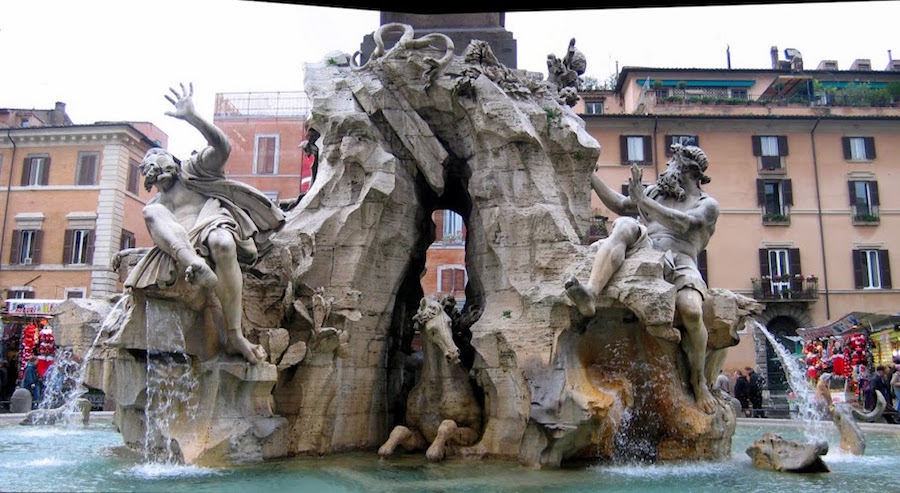
Dialogue in a Vatican room
It is also said that “Art follows money” so questions about patrons and power are bound to come up. What is happening today in the realms of the art market? Perhaps even asking would be like putting one's foot in the serpentine hair of Bernini's Medusa. While waiting to enter the Vatican Museums, we remember Damien Hirst's 2017 behemoth of an exhibition in Venice that threatened to raise the roof of the Grassi Palace, home of the Pinault Collections. It all left one a little cold. Today, however, Laocoon and His Sons awaits, as do works by Michelangelo and Raphael ... and a room in which we will be mesmerised by Caravaggio's Deposition of Christ, that vertical painting descending from the crown of Mary Magdalen's head in a straight line direct to Jesus' lifeless hand. Under the cornerstone of the tomb there is only darkness and abyss.
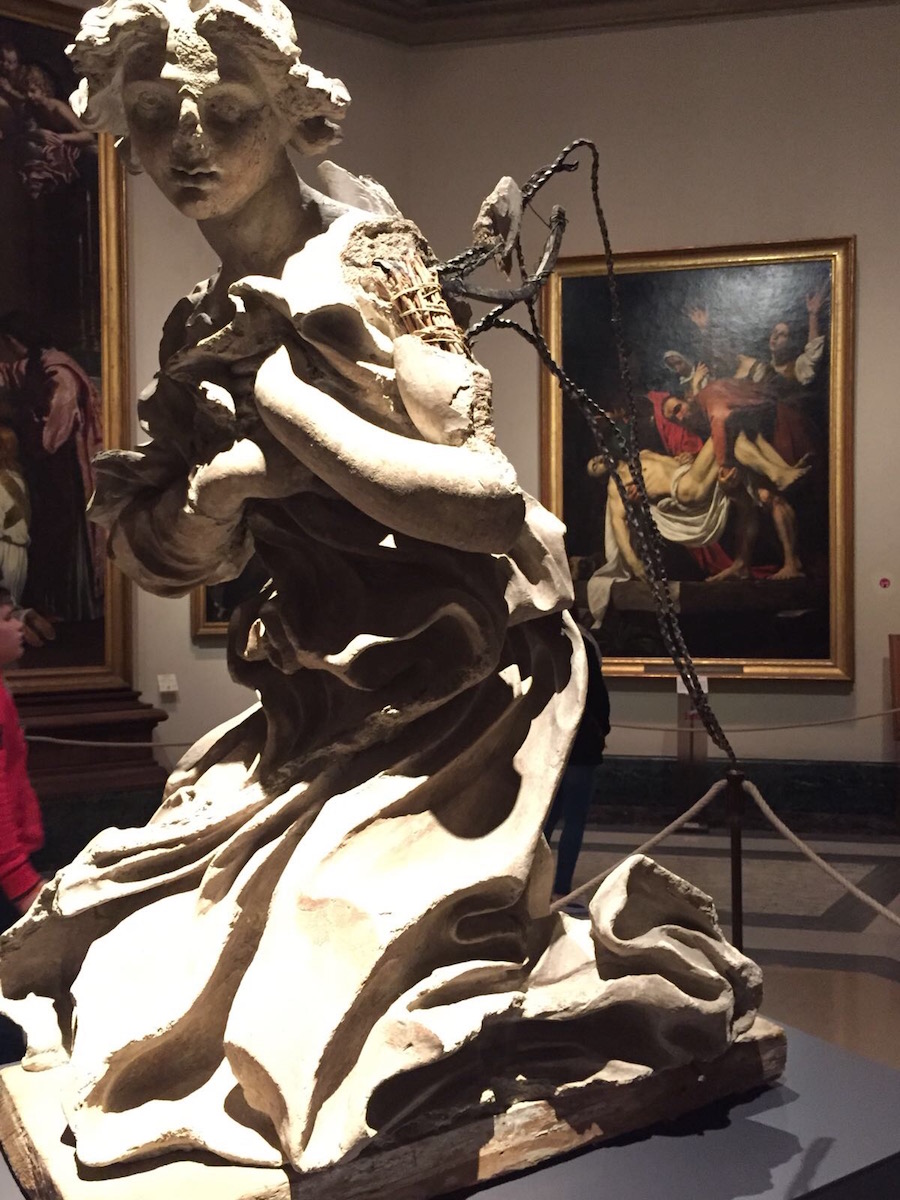
A Bernini angel in front of Caravaggio's Deposition of Christ, Vatican Museum, Rome
What is a Masterpiece? wondered Kenneth Clark in his barely 40-page booklet of lecture transcriptions. The answer? It is art that, having entered the mind of a genius in a moment of enlightenment, is capable of giving us either or both butterflies and a punch to the stomach. Caravaggio, from his space on the wall, establishes a dialogue with the Bernini angel in the middle of the room. A kneeling angel, it was once the mold for a Vatican alterpiece and the iron rods that form his wings are exposed to view, having lost the plaster that used to cover them. Likewise, the tightly-packed bundles of straw that shaped his arms under a layer of clay. He is one angel prefiguring another. And a butterfly punch to the stomach.
(Translated from the Spanish by Shauna Devlin)
- Bernini's Rome: For Love Of The Eternal City - - Alejandra de Argos -

